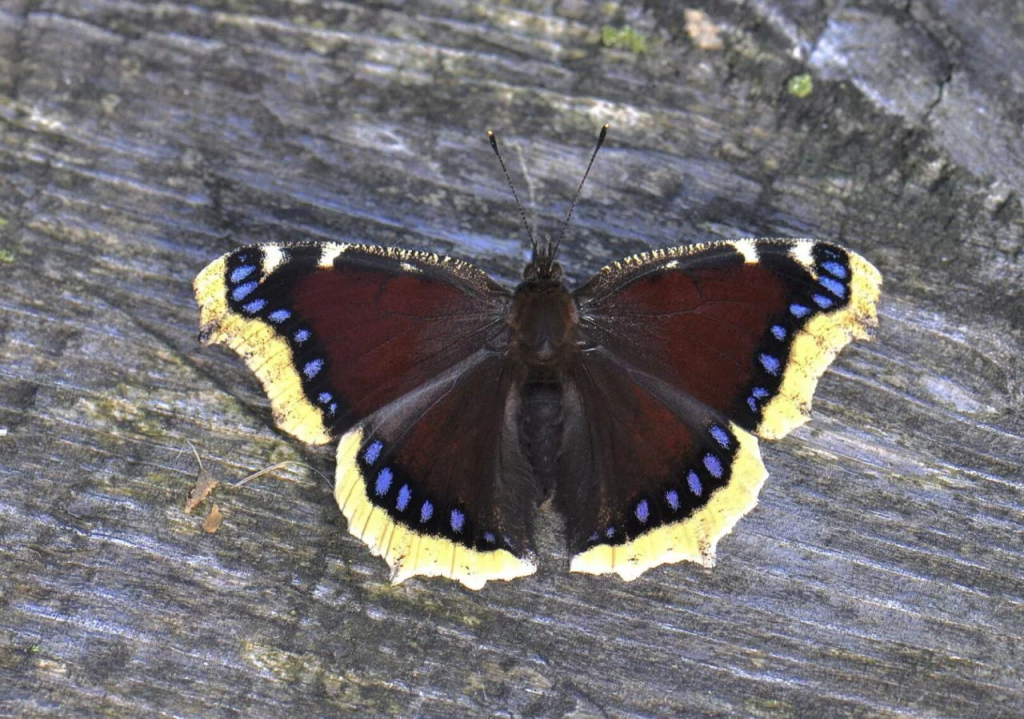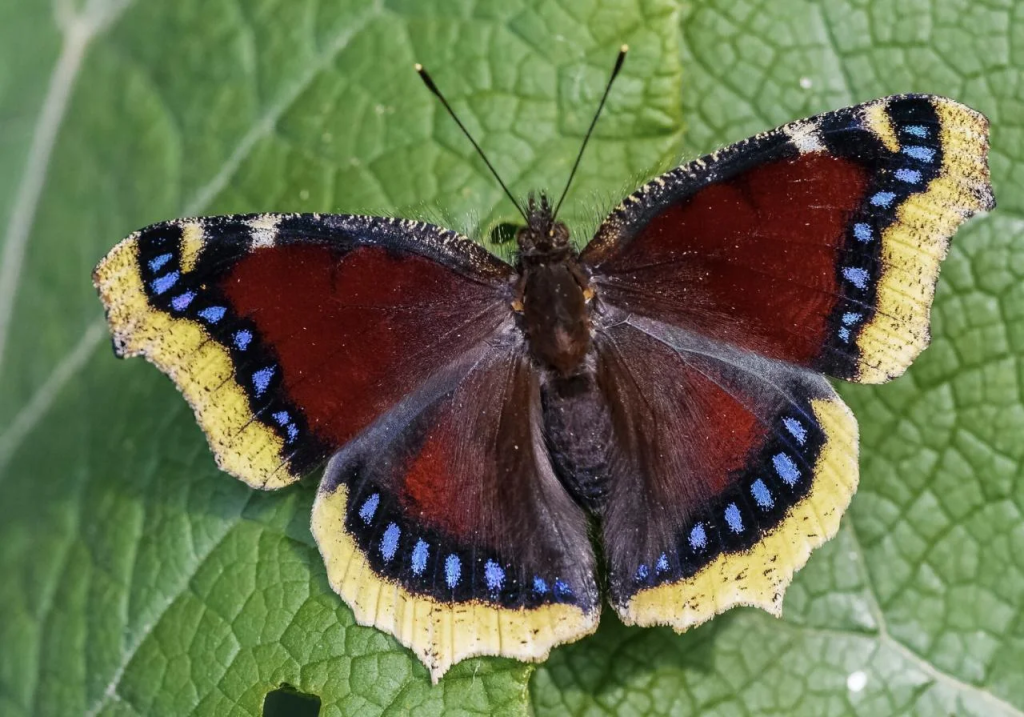You know where to find me—always in my garden. Gardening is a passion of mine. There’s nothing quite like the satisfaction of seeing your efforts pay off as plants grow and flourish. But let’s be honest—it’s not always easy. One of the biggest challenges is dealing with pests. Sometimes it’s hard to tell which ones are beneficial and which could destroy everything you’ve worked so hard to cultivate.
Recently, I came across a picture on social media that perfectly captured this uncertainty. It startled me at first glance. The image showed a leaf covered in tiny, intricate black geometric patterns. It looked like the leaf was wrapped in some kind of alien mesh or afflicted by a strange disease. Like me, many others were left wondering what it could be.

I discovered that the unusual patterns I observed were actually the eggs of the Nymphalis antiopa butterfly. If you’re not familiar with this species, allow me to introduce you to the Mourning Cloak butterfly, a fascinating insect with a unique life cycle and remarkable traits.
Let’s begin with the eggs. The close-up image I saw depicted these eggs on a leaf, resembling a delicate layer of black lace intricately spread across the surface. Once you get past the initial surprise, their beauty becomes apparent. The eggs are laid in clusters, and each tiny egg is a marvel of perfect geometry. My first thought was, “This is either going to be great or terrible for my garden.”
Luckily, there’s good news: the Nymphalis antiopa butterfly offers several benefits. Although the caterpillars (or larvae) feed on leaves, they typically prefer willows, elms, and poplars, among other trees and shrubs. So, if your garden is filled with vegetables and flowers, you should be safe. Additionally, these butterflies feed on decaying fruit, helping with decomposition, which can make them quite beneficial.

It’s fascinating to observe the entire life cycle of these butterflies. The caterpillars emerge from their intricate, unusual eggs once they hatch. They have bristly, spiky bodies that are black with tiny white dots. As they grow, they go through several stages known as instars, during which they shed their skin multiple times.
Once they reach maturity, the caterpillars find a safe spot to pupate, transforming themselves inside a chrysalis that resembles a small sleeping bag. Depending on the environment and season, this stage can last anywhere from a few weeks to several months. When they finally emerge, they become beautiful Mourning Cloak butterflies, with dark, velvety wings adorned with blue spots and edged in bright yellow.
One of the most intriguing aspects of Mourning Cloak butterflies is their behavior. Unlike many other species, these butterflies hibernate during the winter. They find a sheltered spot, such as under an old shed, beneath loose bark, or in a woodpile. They are often among the first butterflies to appear in the spring, sometimes even before the flowers bloom. The name “Mourning Cloaks” is partly due to their early arrival; their dark, somber wings contrast sharply with the stark, early spring landscape, resembling a mourning garment.

As gardeners, we often focus on the immediate impact insects have on our plants. When we spot caterpillars, our first instinct might be to worry that they’ll devour everything in sight. However, it’s important to step back and see the bigger picture. A great example of nature’s balance is the Nymphalis Antiopa butterfly. While their caterpillars may munch on some leaves, they won’t destroy your entire garden. In fact, by allowing these butterflies to thrive, you’re contributing to a healthier ecosystem.
So, what should you do if you come across these caterpillars or their eggs in your garden? I recommend leaving them be. Enjoy the process and watch the transformation. If you’re particularly concerned about your plants, you can gently move the caterpillars to a tree or shrub where they’ll be happier and less likely to nibble on your cherished flowers.

Gardening is all about finding balance. It’s about creating harmony between the animals that share your space and the plants you cherish. Before reaching for pesticides the next time something seems amiss in your garden, take a moment to investigate. You might stumble upon something extraordinary, just as I did when I discovered the eggs of the Nymphalis Antiopa butterfly.
Gardening is an ongoing adventure, with each season bringing its own rewards and challenges. It’s these experiences that make the journey so rewarding.






